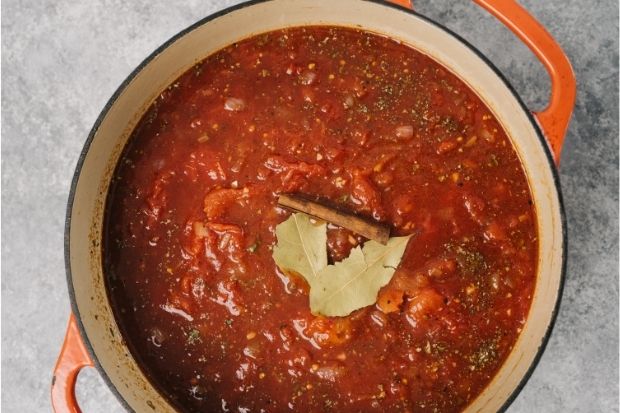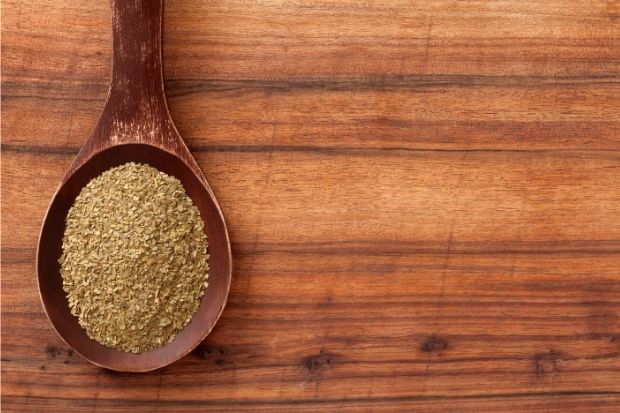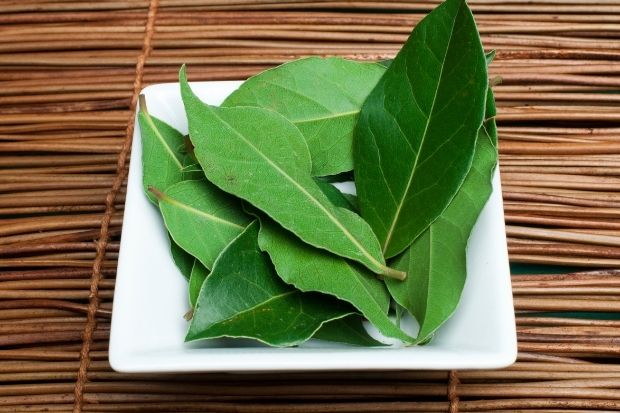Bay leaves are used in numerous slow-cooked dishes, including various soups and stews. More often than not, recipes will call for a bay leaf to be dropped into the soup or stew and then discarded once the dish is completely cooked.
Bay leaves can be whole or ground, but most recipes require the whole kind. Why? Because the bay leaf is a very flavorful and powerful-tasting herb, and the ground type of bay leaf is often too overpowering for most dishes.
What Is the Bay Leaf?

A bay leaf is part of the bay laurel plant, which is an evergreen shrub that grows particularly well in warm climates. It is used as a herb and has a scent and flavor that is similar to oregano and thyme. People usually cook a bay leaf in their soups and stews, but it is removed before anyone consumes the dish. Whole bay leaves are usually used, and with rare exceptions, all you need is one leaf to produce the flavor you’re looking for in a particular dish.
Different types of bay leaves
There are several types of bay leaves, but the two most common types are the Turkish (or Mediterranean) bay leaf and the California bay leaf. The former is wide and short, while the latter is much narrower and longer. Turkish bay leaves are the most common. California bay leaves have a more pungent flavor. Bay leaves are the perfect ingredients in many different sauces, soups and stews because they add a little punch and some extra spiciness to the dish.
Why Use Whole Instead of Ground?
There is one simple reason to use a whole bay leaf instead of ground bay leaves: the ground leaves will provide the dish with a little too much spiciness and bay leaf flavor.
In fact, even if your recipe calls for one fresh bay leaf and all you have is a California bay leaf (which is more pungent and less common than the Turkish bay leaf), you should cut the leaf in half so that you’re not using the entire leaf.
Ground leaves increase the kick that you get when using bay leaves and the dish will usually turn out way too pungent and spicy for most people.
Another reason for using a whole bay leaf instead of ground leaves is because, unlike other herbs and plants, bay leaves do not soften when they are cooked. Bay leaves are a little bit prickly and sharp, and if you’ve ever accidentally had a cooked bay leaf in your mouth, you know how unpleasant it is. Now picture that bay leaf being crushed into a lot of tiny, sharp pieces.
When bay leaves are ground up, there’s no way to successfully remove all of them from your dish when it’s cooked, which is very inconvenient for those eating that dish.

In other words, there are two main reasons why soups and stews and similar dishes call for a bay leaf that is whole and not crushed: it is less overpowering in taste, and it is easier to remove from the dish once it’s cooked.
That being said, you can also grind or crush bay leaves into a very fine powder, but if you do this you should use just a tiny bit of the resulting spice in your recipe. The powdery bay leaves are very potent and therefore you will only need a tiny bit to season your dishes. And if it’s in a fine powder form, you naturally won’t have to remove it from your dish before you serve it.
In Summary
Bay leaves are an excellent herb for a lot of slow-cooked dishes and are prevalent in French, Indian, Thai, and Spanish foods.
Bay leaves are usually cooked whole, but you can use a spice grinder to grind them up into smaller leaf pieces if you prefer. But whether they’re just ground up or found in powder form, you only need a tiny bit of the crushed leaves in your recipe. Most people believe that it’s best to use either whole leaves or leaves that are in powder form in your recipes, and leave the coarsely crushed leaves for things such as potpourri and other projects.
When deciding between whole bay leaves vs. crushed, just keep in mind the tips in this article and they should help you decide which to use for your own dishes.
